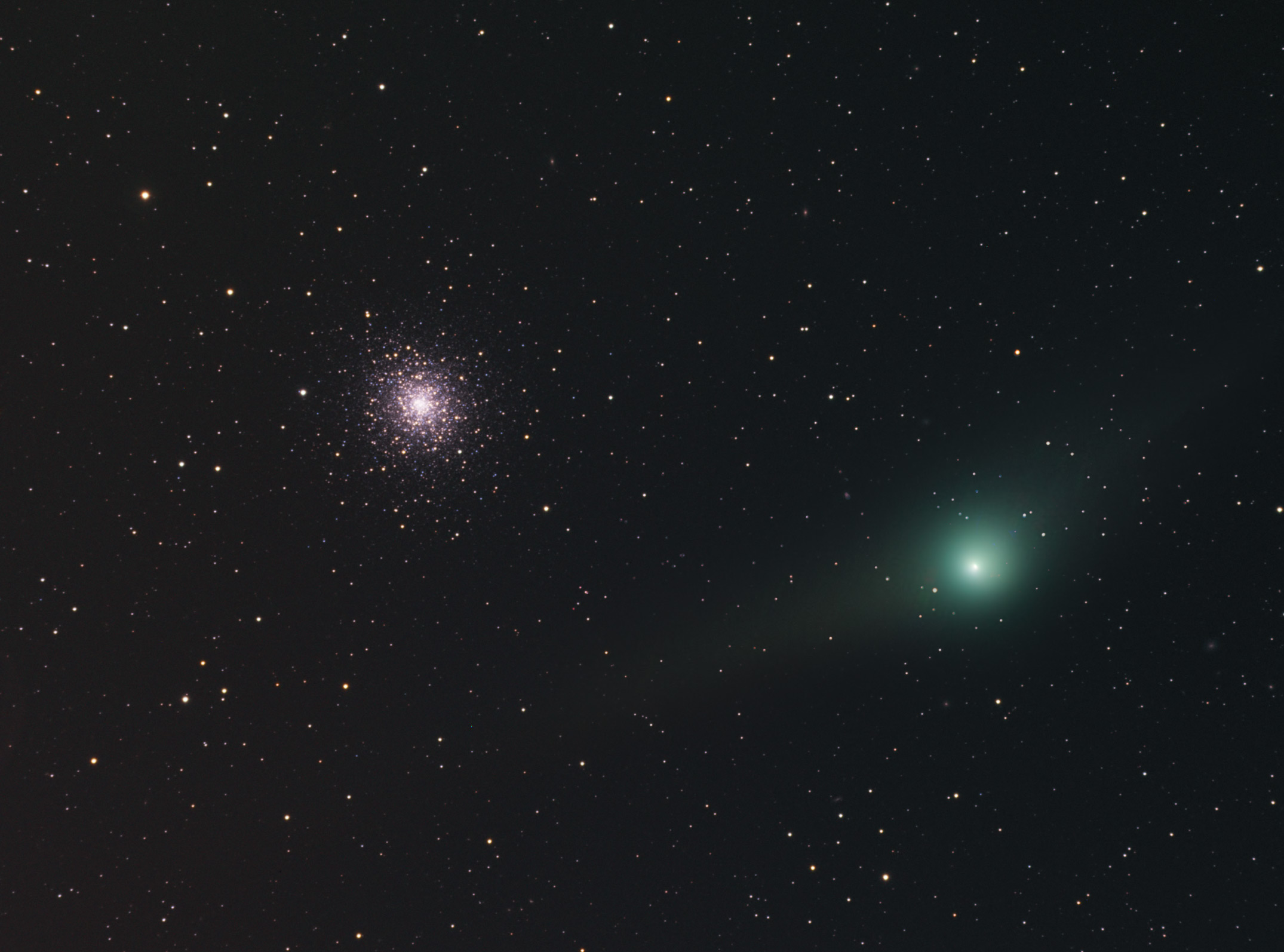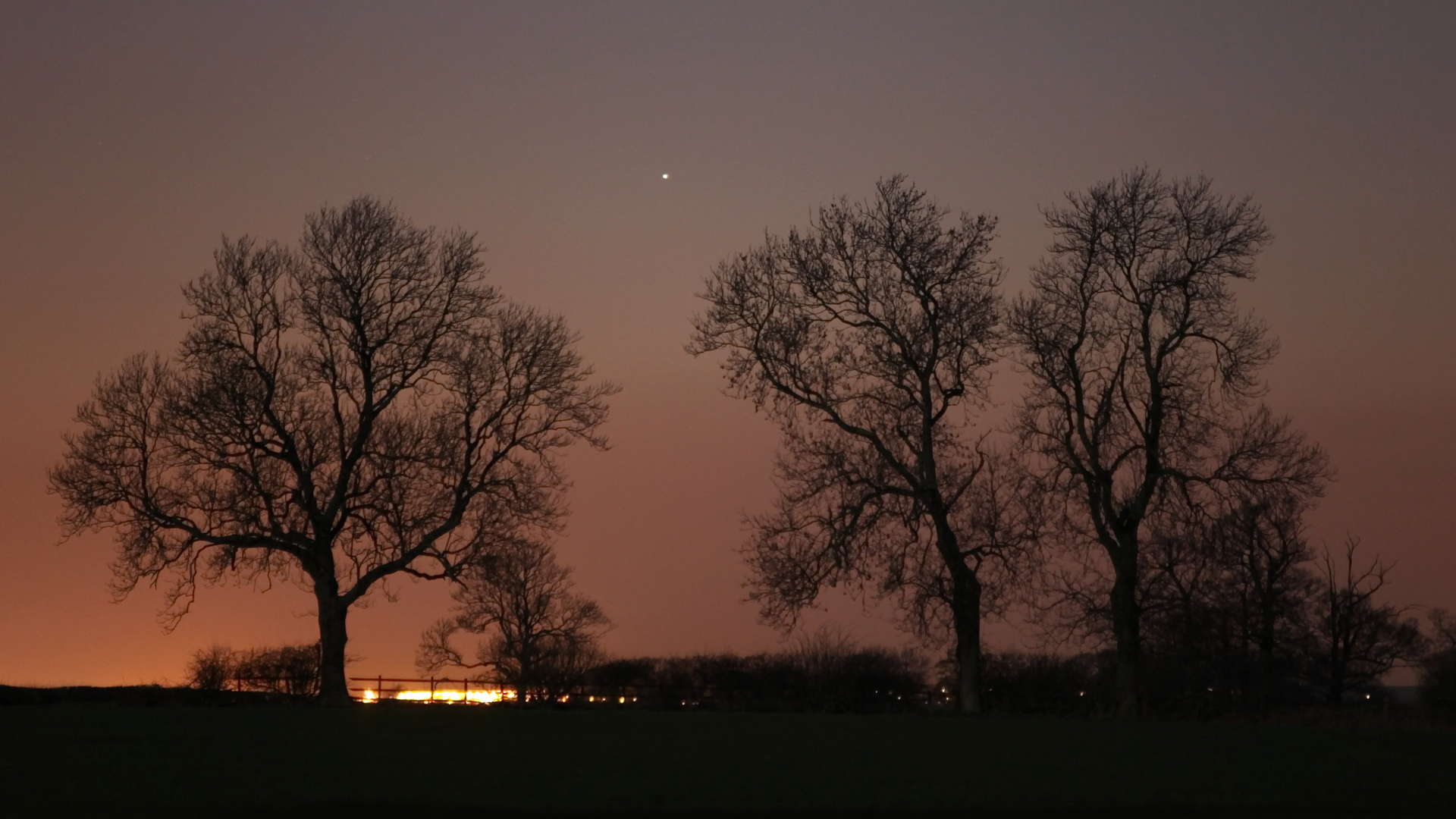'Two-Tailed Comet' Cruises By Star Cluster in Skywatching Photo

Comet Garradd sails slowly past globular star cluster M92 in this stunning image from a skywatcher in California.
The comet approached M92 as it flew over the Hercules constellation. It passed within half a degree of M92 on the day the image was taken.
M92 is one of the brightest globular clusters in the sky, and can sometimes be seen with the naked eye from the northern hemisphere. It's located more than 27,000 light-years from Earth. (A light-year is the distance light travels in one year — about 6 trillion miles, or 10 trillion kilometers.)
Skywatcher Bill Snyder took this photo on Feb. 3, 2012 from Heavens Mirror Observatory in the Sierra Nevada Mountains.
Comet Garradd is a slow-moving comet and has a magnitude of 6.5. Magnitude is used in astronomy to measure the brightness of an object. On this scale, smaller numbers represent brighter objects. The dimmest objects visible to the human eye are about magnitude 6.5, the same as Garradd.
If you look closely at the image, this comet appears to have two tails. The icy object begins to warm as it nears the sun and gas is created, forming the "halo" (called a coma) seen in the image. As the gas and rock particles in the coma move away, the gas is blown in one direction by solar wind while the rock particles ted to lag behind, creating the illusion of two tails.
Editor's note: If you have an amazing skywatching photo you'd like to share for a possible story or image gallery, please contact managing editor Tariq Malik at tmalik@space.com.
Breaking space news, the latest updates on rocket launches, skywatching events and more!
Follow SPACE.com for the latest in space science and exploration news on Twitter @Spacedotcom and on Facebook.
Join our Space Forums to keep talking space on the latest missions, night sky and more! And if you have a news tip, correction or comment, let us know at: community@space.com.
Nina Sen is a freelance writer and producer who covered night sky photography and astronomy for Space.com. She began writing and producing content for Space.com in 2011 with a focus on story and image production, as well as amazing space photos captured by NASA telescopes and other missions. Her work also includes coverage of amazing images by astrophotographers that showcase the night sky's beauty.
